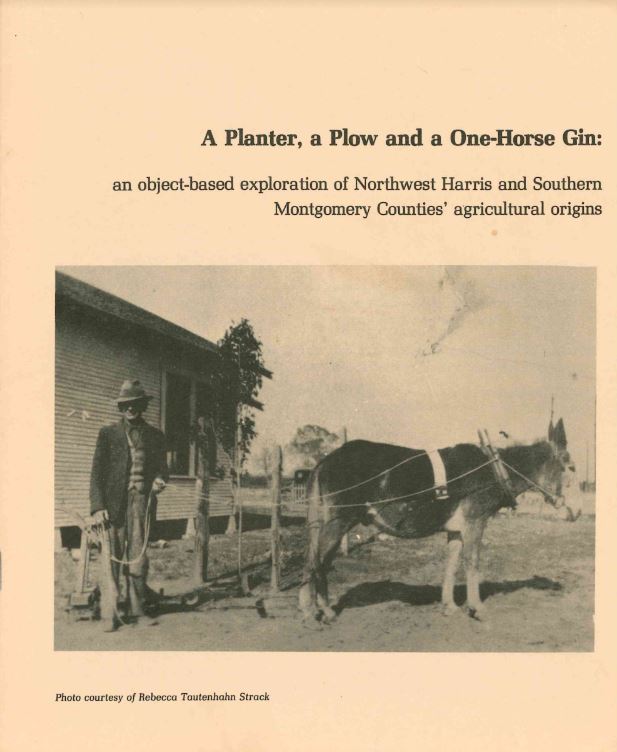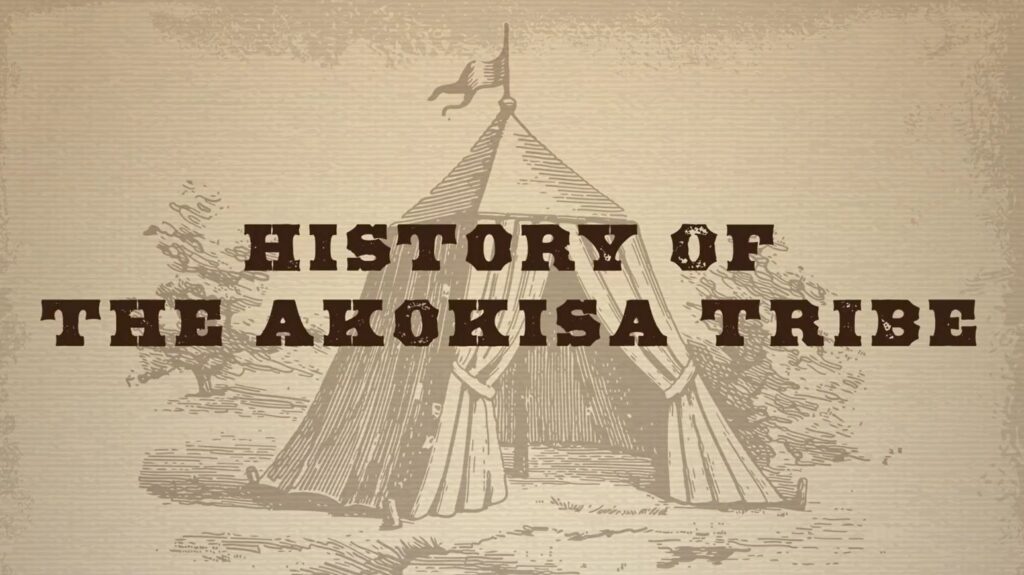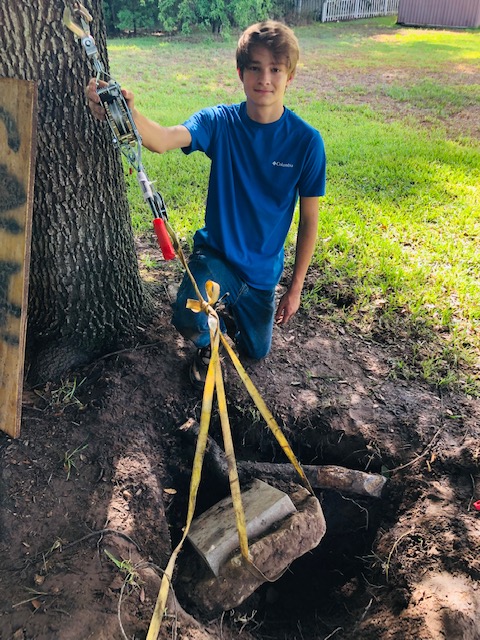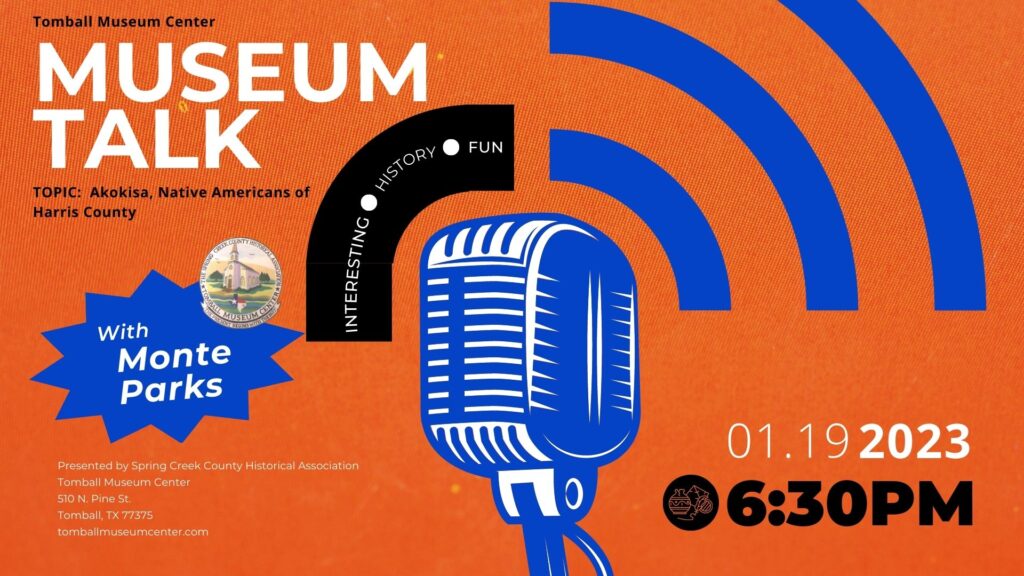This booklet is the culmination of a project undertaken by the Spring Creek County Historical Association in January, 1980. Funded by the Texas Committee for the Humanities, this project was designed to foster an improved understanding of and appreciation for the agricultural heritage of Northern Harris and Southern Montgomery Counties, the territory formerly designated as Spring Creek County.
We have several reasons for becoming interested in such a project. Agriculture, the earliest of three main developmental threads in the historical fabric of this area, continues to be vital part of our socio-economic and cultural life. Furthermore, burgeoning growth and increasing urbanization make us more aware daily that we are becoming part of the Houston metroplex. As this occurs, it is essential that we gain a firm understanding of our agrarian heritage if we are to preserve this area’s cultural identity and integrity.
We also have a concrete, tangible reason for undertaking such a project. In fact, we have a building full of them! The Farm Museum, which is part of the Tomball Community Museum Center, is the repository for an important and extensive collection of agricultural implements and machinery used in this area long ago. Though we had the artifacts and realized their value, we lacked the expertise necessary to bring the collection to life and fulfillment of its potential.
Our most sincere thanks are expressed to the two scholars who helped us with this task: William C. Griggs, Executive Director of the Panhandle-Plains Historical Museum in Canyon, Texas and Terry G. Jordan, Consultant in Cultural Geography at North Texas State University in Denton, Texas.
Mr. Jordan authored the narrative portion of this publication, “The Agricultural Heritage of Northern Harris and Southern Montgomery Counties, Texas”. Mr. Griggs prepared the date on selected specific Farm Museum artifacts for the section entitled, “The Spring Creek County Historical Association Agricultural Collections”.
We also wish to acknowledge
- the members of the Advisory Committee for this project: Ernest W. Balke, Aletia Baysinger, Margie Benignus, Norman Froehlich, Earl Hillegeist, Mary Kimball, Thornwell Kleb, Mary Roach, and Lessie Upchurch
- Ann Lindemann and Mac Upchurch who were diligent assistants in compiling an inventory of the Farm Museum collections
- the numerous hard-working volunteers who prepared food and collected data during “Barn Days”
A final debt of gratitude is owed to the many farmers and farmer’s wives who participated in “Barn Days” through sharing their memories of our museum objects in use and by reminiscing about farm life in this area in times past. Because of them, we have the priceless treasure of living history, to be enjoyed now and to benefit future generations.
I also wish to express my own sincere gratitude for having been able to share in this endeavor.
Carolyn Keating, Executive Director, Tomball Community Museum Center, June, 1980



